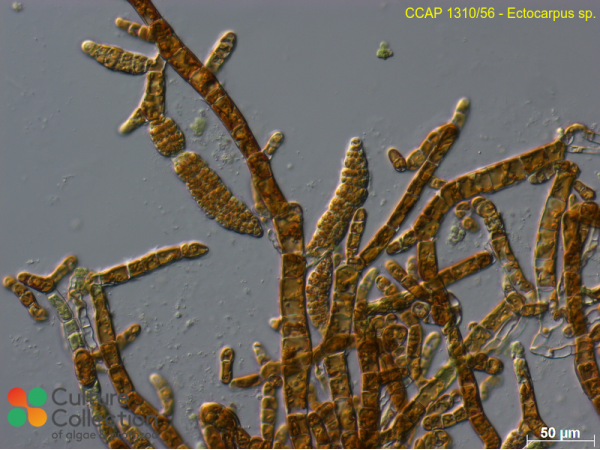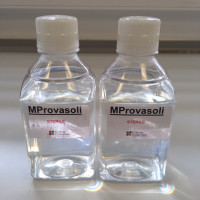Note: for strains where we have DNA barcodes we can be reasonably confident of identity, however for those not yet sequenced we rely on morphology
and the original identification, usually made by the depositor. Although CCAP makes every effort to ensure the correct taxonomic identity of strains, we cannot guarantee
that a strain is correctly identified at the species, genus or class levels. On this basis users are responsible for confirming the identity of the strain(s) they receive
from us on arrival before starting experiments.
For strain taxonomy we generally use AlgaeBase for algae and
Adl et al. (2019) for protists.
| Attributes | |
| Isolator | Müller (pre 2005) |
| Notes | gametophyte obtained from a spore of Ec sil NZNZ Z9 nxV; the first n° refers to the uniloc, the second to the gametophyte ; f: female/ m: male; n or no precision : morphologically devoid of viral symptoms / V: viral symptoms; This macroalgal culture contains bacteria and probably other organisms in low numbers, we are happy to provide further info on specific strains if you contact us |
| Axenicity Status | Bacteria and other organisms present |
| Country | New Zealand |
| Environment | Marine |
| GMO | No |
| Group | Macroalgae |
| In Scope of Nagoya Protocol | No |
| ABS Note | Collected pre Nagoya Protocol. No known Nagoya Protocol restrictions for this strain. |
| Collection Date | pre 2005 |
| Original Designation | Ec sil NZ KU 1-3m |
| Pathogen | Not pathogenic: Hazard Class 1 |
| Strain Maintenance Sheet | SM_Ectocarpus.pdf |
| Toxin Producer | Not Toxic / No Data |
| Type Culture | No |
| Taxonomy WoRMS ID | 144099 |
| Other Designations | DGM 020-09 |
| Formerly Listed in CCAP as | Ectocarpus siliculosus (Dilwyn) Lyngbye 1819 |
Related Products
CCAP MAMP-C
Modified Provasoli's Medium
STERILE STOCKS
Sterile concentrated stock to make up 5 litres of Modified Provasoli's medium (or 10 litres of half-
CCAP MAMP-P
Modified Provasoli's Medium
1 LITRE PREMADE
1 litre of sterile, ready to use, Modified-Provasoli's medium (full strength). Modified Provasoli's


